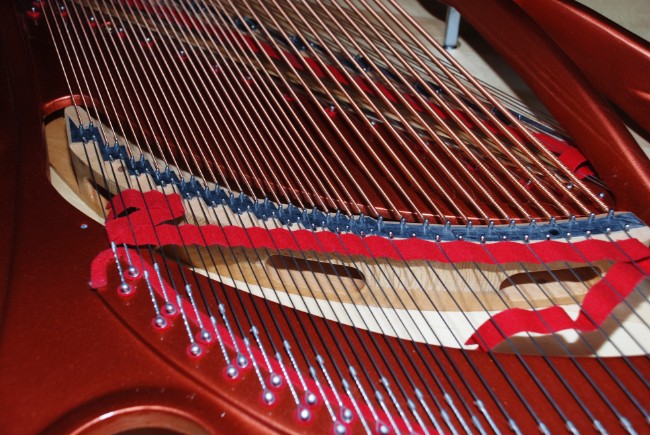Piano Tuner in Inverclyde, Renfrewshire, Glasgow, the west of Scotland and beyond.
Tel: 07714959806 David@piano.plus.com
This is the first of three pages containing technical information articles.
Brahms Lullaby .mp3

Some of the PDF articles here were designed as promotional Information Sheets for clients. They are included as general information on piano repair and maintenance tasks.
To view the PDF articles more easily, you can click to expand them to full screen.
This short Tuning Basics article gives a brief overview of why pianos need tuning:
For more detailed information on piano tuning, please refer to the About Tuning page of this website.
Among the most frequently seen broken parts on older upright pianos are bridle straps (also called bridle tapes). These little fabric tapes with leather ends connect together the two main parts of the action for each note; the hammer and the wippen. They help the hammer to rebound from the string. Sometimes the leather (or synthetic) ends are perished, and sometimes the fabric tape. English-made pianos have a slightly different way of securing the tape ends from what is shown here.
Over time, playing causes the piano strings to make deep grooves the hammer felt. Restoring the playing surface as described here is one of the most worthwhile tasks for an older piano and can make a huge difference to the tone quality.
With time and playing, felt parts get compressed, and the geometry of the piano's action changes. Action regulation restores responsiveness and reliability (alliteration alert!) to the action of the piano:
The cure for severe damage or discolouration of the key coverings is replacement with new key covering material. The PDF below illustrates some of what is involved.
I don't undertake this work myself. It is more complex than you imagine. There are very few workshops now in the UK that carry out this specialised work, and it is expensive.
A problem often found in older pianos is loose tuning pins. The wooden 'wrest plank' (pinblock, in USA terminology) that holds the tuning pins dries out with age, the tuning pin holes enlarge, and the pins become too loose.
The very best solution to this is to fit a band new wrest plank, done as part of a full rebuild. But very few pianos are of a quality and value to make this worthwhile.
Over the years various liquid "doping" solutions were used by technicians to tighten the wood round loose tuning pins, with limited success. Around thirty years ago, technicians in the USA discovered that very low-viscosity cyanoacrylate adhesive - 'superglue' - is an extremely effective treatment. It works quickly and durably; not to stick the tuning pin to the wood, but to reconstitute the wood fibres (exactly how it does this is not yet fully elucidated. Cyanoacrylate reacts strongly with cellulose forming a compound called cellulose cyanoacrylate, and wood is more than 50% cellulose).
The superglue treatment has now been used on very many older pianos, and reports are universally positive. This fact sheet describes the technique. It can be applied to just the odd loose pin, or to the whole piano.
This discovery means that pianos which would otherwise have to be disposed of can be revived and serve usefully for many more years.
Often old pianos have key-beds whose felt parts (front and centre rail washers and back-touch felt) are moth-eaten or otherwise worn. This affects key dip and other things, and makes the action unreliable:
Dampers are the felt pads which stop the strings from sounding when you take your fingers off the keys. On older pianos they are often hardened with age, making them less effective and producing noises of their own aganst the strings. Replacement is often very well worthwhile:
Each piano key sits in place on two metal pins in the keyframe; one in the centre and one at the front. The centre pins go right up through the keys, and the front pins (which are oval) go into a narrow rectangular recess cut into the underside of each key. The centre holes and the front recesses are all lined with a special bushing cloth material, soft but hard-wearing. In time it can become worn through to the wood, and need replacing:
It's amazing how much dust and dirt accumulates in the keybed! It's unhygenic, and can smell musty. Cleaning it all out is a good idea:
Here's a bit of history. Instructions for home piano repairs, from a century-old set of DIY manuals called The Amateur Mechanic published by Waverley Books. The photos and line drawings are interesting. But I would not recommend actually trying any of the suggestions....